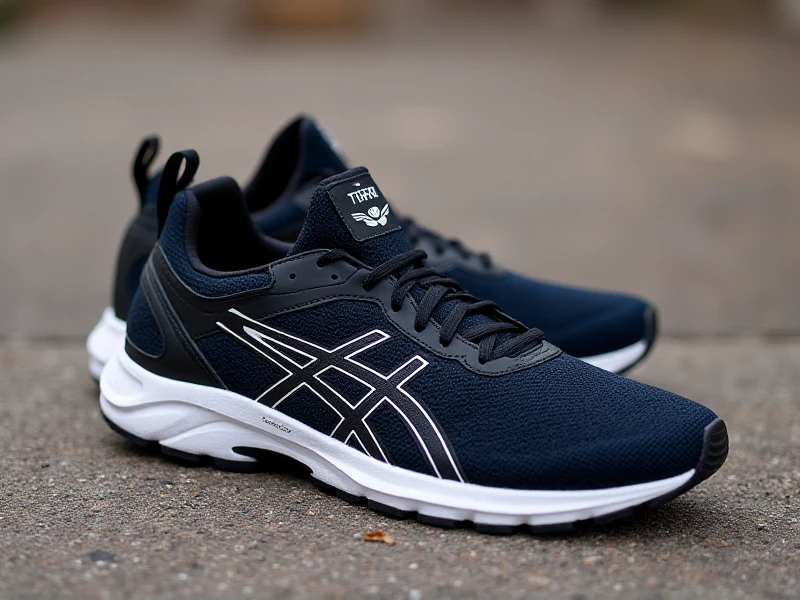The Ultimate Guide to Choosing the Best Men's Running Shoes
2025-06-07

Finding the perfect pair of men's running shoes isn't just about style; it's foundational to your comfort, performance, and injury prevention. With countless options on the market, selecting the ideal pair can feel overwhelming. This guide breaks down the essential factors to consider, ensuring you find the best fit for your feet and running goals.
1. Know Your Foot Type & Gait: The Starting Point
The absolute most critical step. How your foot interacts with the ground (your gait) dictates the support you need:
Neutral Pronation: Your foot rolls inward slightly upon landing, distributing impact evenly. Most runners are neutral and benefit from neutral men's running shoes offering cushioning and flexibility. Look for terms like "neutral," "cushioned," or "flexible stability."
Overpronation: Your foot rolls inward excessively. This requires men's running shoes with stability or motion control features to counter the inward roll and provide medial support. Search for "stability," "motion control," or specific technologies like medial posts or dual-density midsoles.
Underpronation (Supination): Your foot rolls outward, placing pressure on the outer edge. High-cushioned neutral shoes, particularly those promoting flexibility and lateral support, are crucial. Focus on "high cushion," "flexible," or "neutral" shoes with good shock absorption.
Unsure? Visit a specialty running store. Gait analysis offers invaluable insights.
2. Cushioning: Balancing Comfort & Responsiveness
Cushioning absorbs impact, protecting your joints. The right amount is personal:
Maximal Cushioning: Thick, soft midsole materials (like specialized foams or air/gel units) for ultimate shock absorption. Ideal for longer distances, heavier runners, or those prone to joint pain. Examples include Hoka Bondi or Brooks Glycerin.
Moderate Cushioning: The versatile "goldilocks zone" for many runners. Balances impact protection with ground feel and responsiveness. Found in countless popular men's running shoes like the ASICS Gel-Nimbus, Nike Pegasus, or Saucony Ride.
Minimal Cushioning: Offers a natural ground feel and promotes a more efficient stride. Requires stronger feet and is often used for shorter runs or speedwork. Explore options like Altra or specific Nike Free models.
3. Terrain Tailoring: Road vs. Trail
Matching your shoes to where you run is non-negotiable:
Road Running Shoes: Designed for pavement, treadmills, or tracks. Outsole rubber compounds prioritize durability on hard surfaces, offering smooth rides. Lugs (if present) are minimal and shallow.
Trail Running Shoes: Built for rugged paths, mud, rocks, and roots. Key features include:
Aggressive Lugs: Deep, multi-directional patterns for superior grip and traction.
Enhanced Protection: Rock plates shield feet from sharp objects; toe guards prevent bumps.
Water-Resistance: Often use Gore-Tex or similar liners for wet conditions (less breathable). Brands like Salomon and La Sportiva specialize in trail variants.
4. The Essential Fit: Comfort is King
Even the perfect shoe won't work if it fits poorly:
Get Fitted: Sizes vary drastically between brands and models. Always try shoes on!
Toe Space: Ensure at least a thumb's width (approx. half an inch) between your longest toe and the end of the shoe. Feet swell during runs.
Heel & Midfoot Lockdown: Your heel should feel snugly held without slipping or rubbing. The midfoot should feel secure, not pinched.
Width Matters: Most brands offer standard (D) and wide (2E, 4E) options for men's running shoes. Don't force a narrow fit.
Run First: If possible, jog briefly in-store or on a treadmill to test comfort instantly. Walk-around testing is insufficient.
5. Beyond Basics: Weight, Drop & Breathability
Weight: Lighter shoes generally feel faster; heavier ones offer more cushion/stability for endurance runs.
Heel-to-Toe Drop: The height difference between heel and forefoot. (e.g., 10mm vs. 4mm). Higher drop might feel more stable for heel strikers; lower drop promotes a more midfoot/forefoot strike.
Breathability: Look for mesh uppers to keep feet cool, especially essential in warmer weather or longer runs.
Replacement Matters
Men's running shoes lose cushioning and support over time. Replace them roughly every 300-500 miles. Signs include uneven wear, reduced shock absorption, or persistent aches and pains.
Finding Your Perfect Pair
Investing time in finding the right men's running shoes pays dividends. Prioritize understanding your foot and gait, then match this knowledge to cushioning level and terrain requirements. Don't underestimate the importance of a professional fitting and trusting your comfort cues. With the right shoes, every run becomes better, safer, and much more enjoyable.
Ready to upgrade your run? Visit our curated collection of top-rated men's running shoes for every foot type and terrain!
Category: